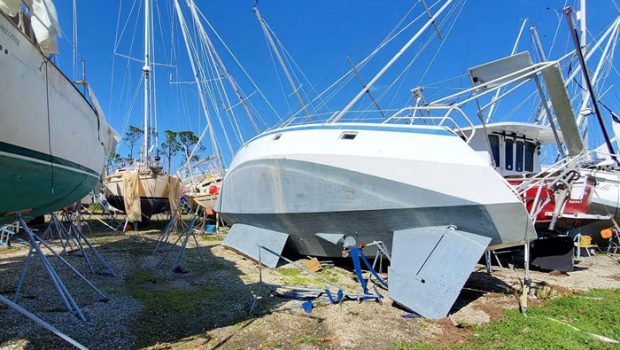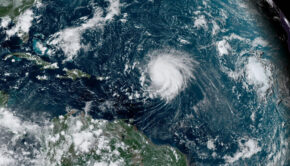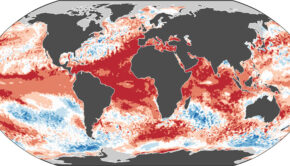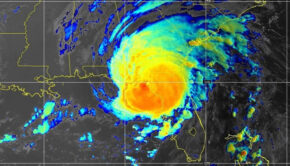Risks to boats in hurricane zone
Published on October 6th, 2022
by Darrell Nicholson, Practical Sailor
With our Southwest Florida office so near to the path of Hurricane Ian’s eye, we’re getting a sad, up-close look at the storm’s impact on local boats and coastal infrastructure. We’re also gaining a better understanding of what sailors and the ports that serve them can do to minimize their risks in future storms. Since it is still so soon after the storm, there is still plenty to be learned. Three immediate observations stood out to me.
Hurricane Junction
Southwest Florida is a risky place to keep a boat during hurricane season. Even very early in the storm’s development near the island of Grenada, the risk to Florida’s Gulf Coast was clear. Storms moving east at that latitude frequently enter the Gulf of Mexico and intensify, posing a threat to the southwest corner of the Florida peninsula, an area that is also vulnerable to storms approaching from the Atlantic.
As the National Oceanic and Atmospheric Administration’s historical hurricane tracks data show, a total of 69 recorded storms have impacted areas within 50 miles of the small dimple in the southwest Florida coast near Bonita Springs, just south of Sanibel Island and Ft. Myers. The area around Marco Island, just to the south, has been criss-crossed by dozens of powerful storms so frequently from so many different direction that the NOAA historical map resembles that for flight paths into Atlanta’s Hartsfield Airport.
The second predictable impact was flooding. The shallow cruising area between Charlotte Harbor and Everglades City, the Gulf Coast gateway to the Everglades National Park, is swamp—a wild and beautiful mangrove and sawgrass estuary where the Florida peninsula, tilted slightly southwest, spills Everglades freshwater into the bay.
Originally, much of the land remained underwater year round, and the mangrove forests served as a critical barrier to erosion from wave action while providing a nursery for marine life. Mammoth tracts of this swamp has been filled and paved during the last century. But dredging and filling the swamp-bottom doesn’t stop the water from coming.
Try as we might, draining this region is like bailing your bathtub with both faucets running full gush. Just when you think you’re making progress, along comes an Ian (2022), a Sally (2020), an Irma (2017), a Wilma (2005) or a Charley (2004) to drain their salty Gulf swimming pool into your tub. Dress code for Florida hurricane season should include a rubber ducky and snorkel. – Full report









 We’ll keep your information safe.
We’ll keep your information safe.